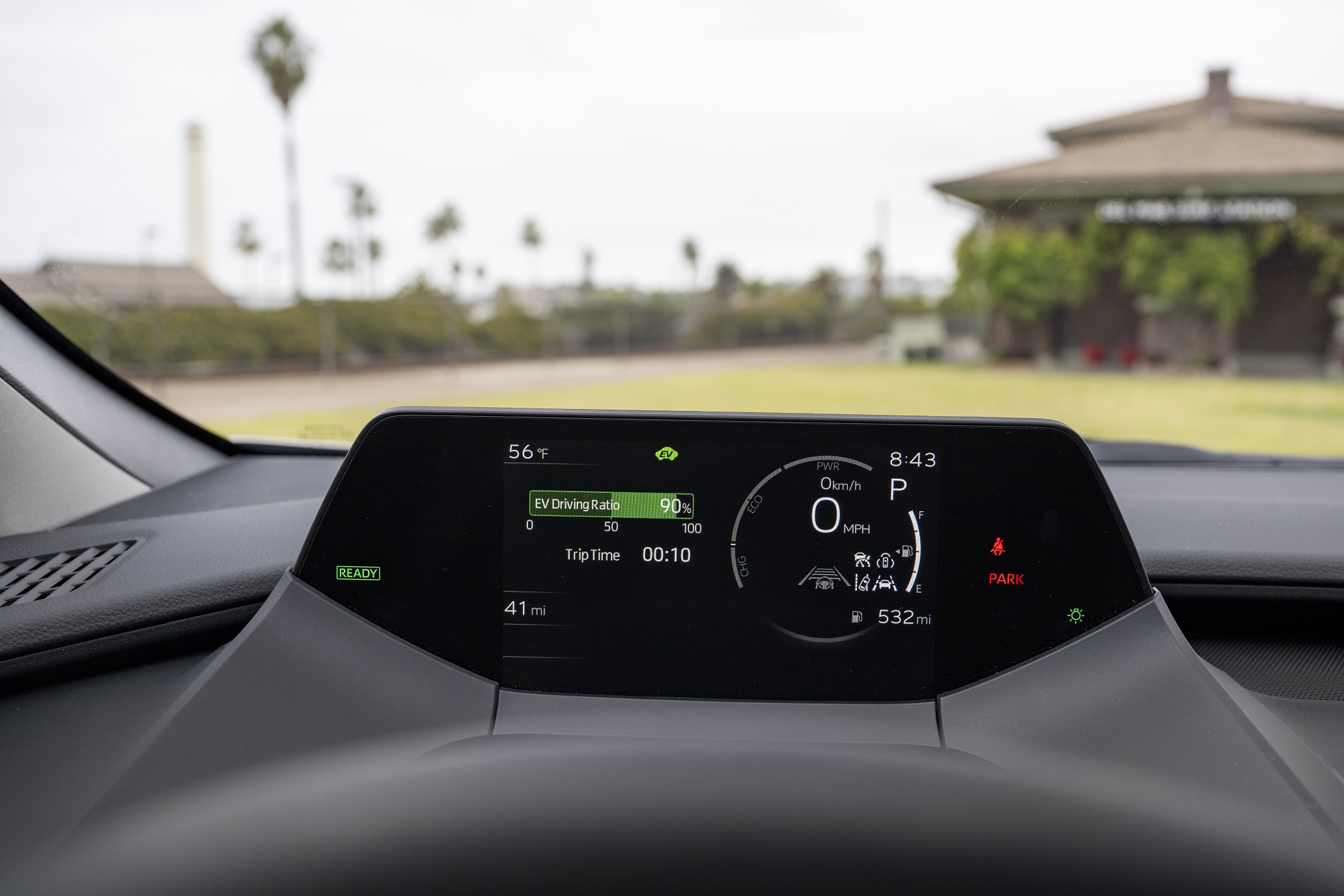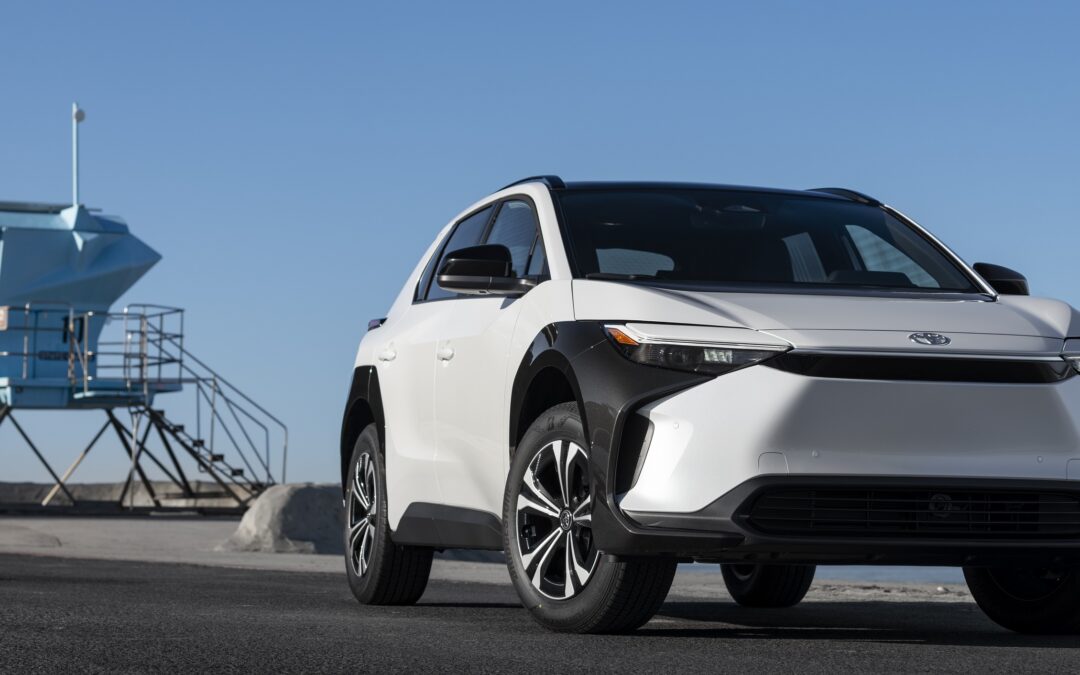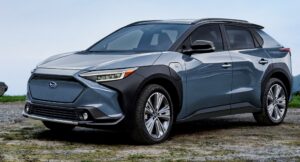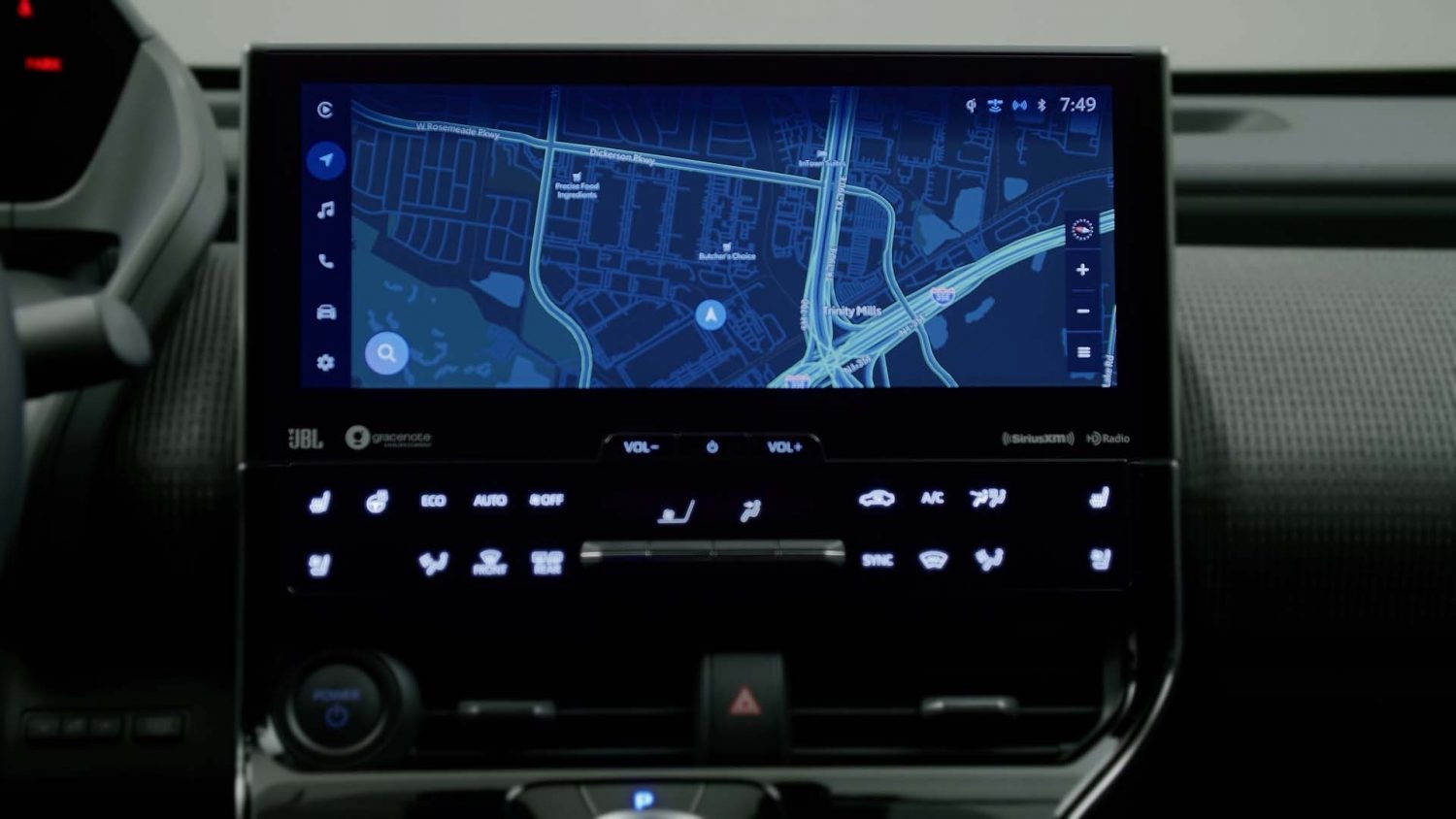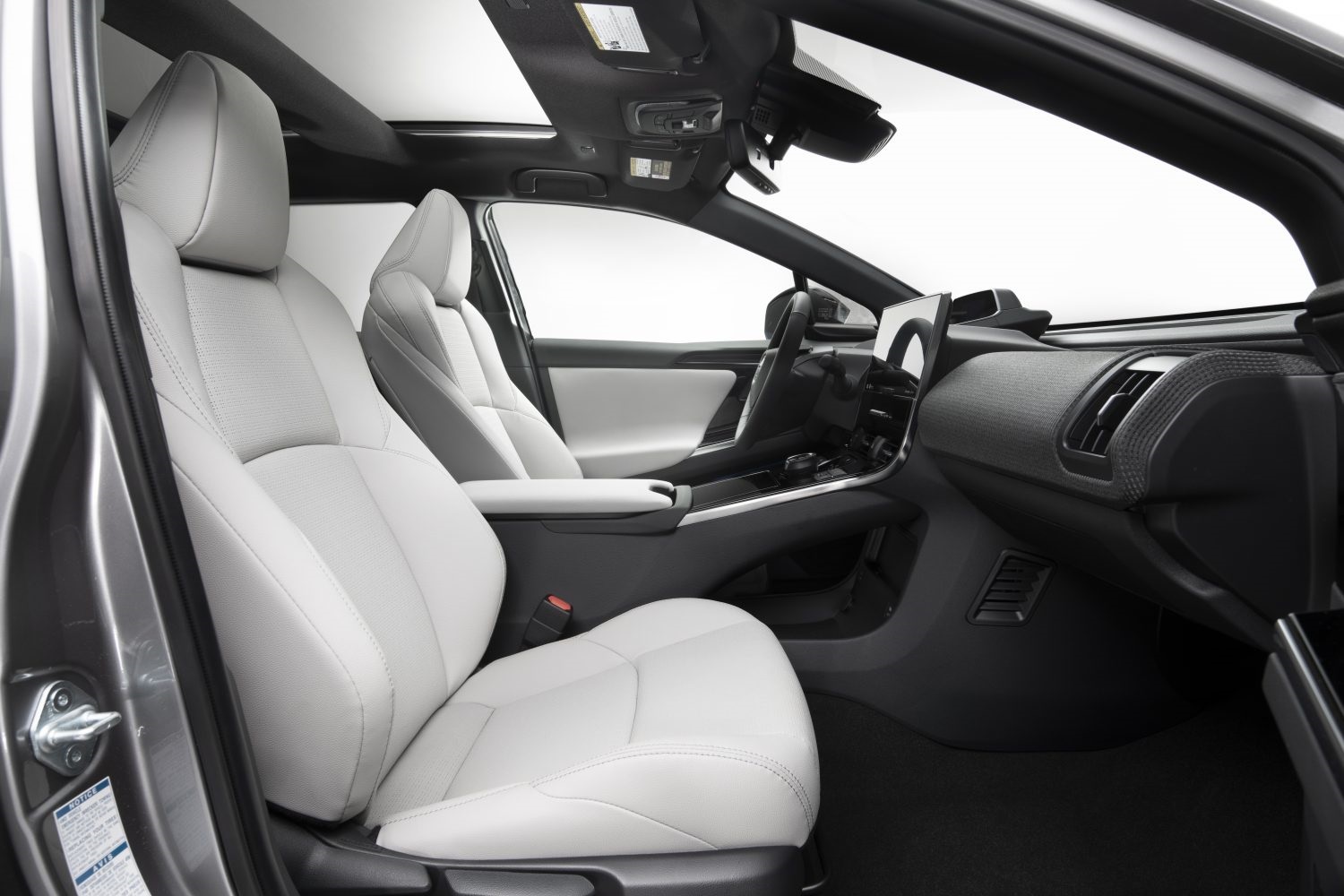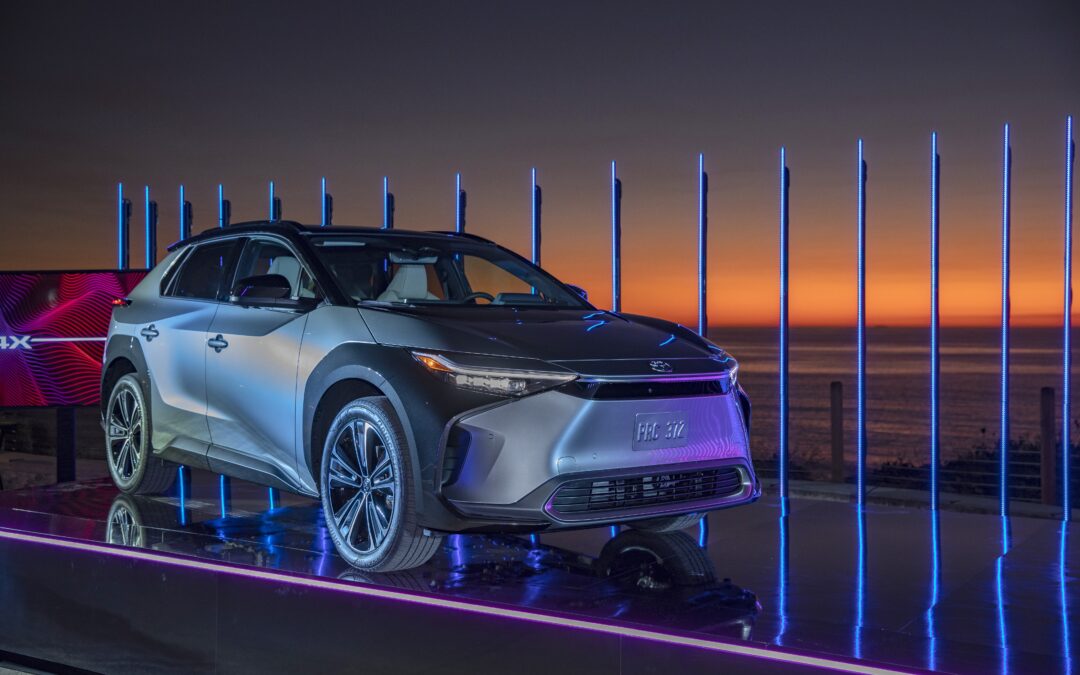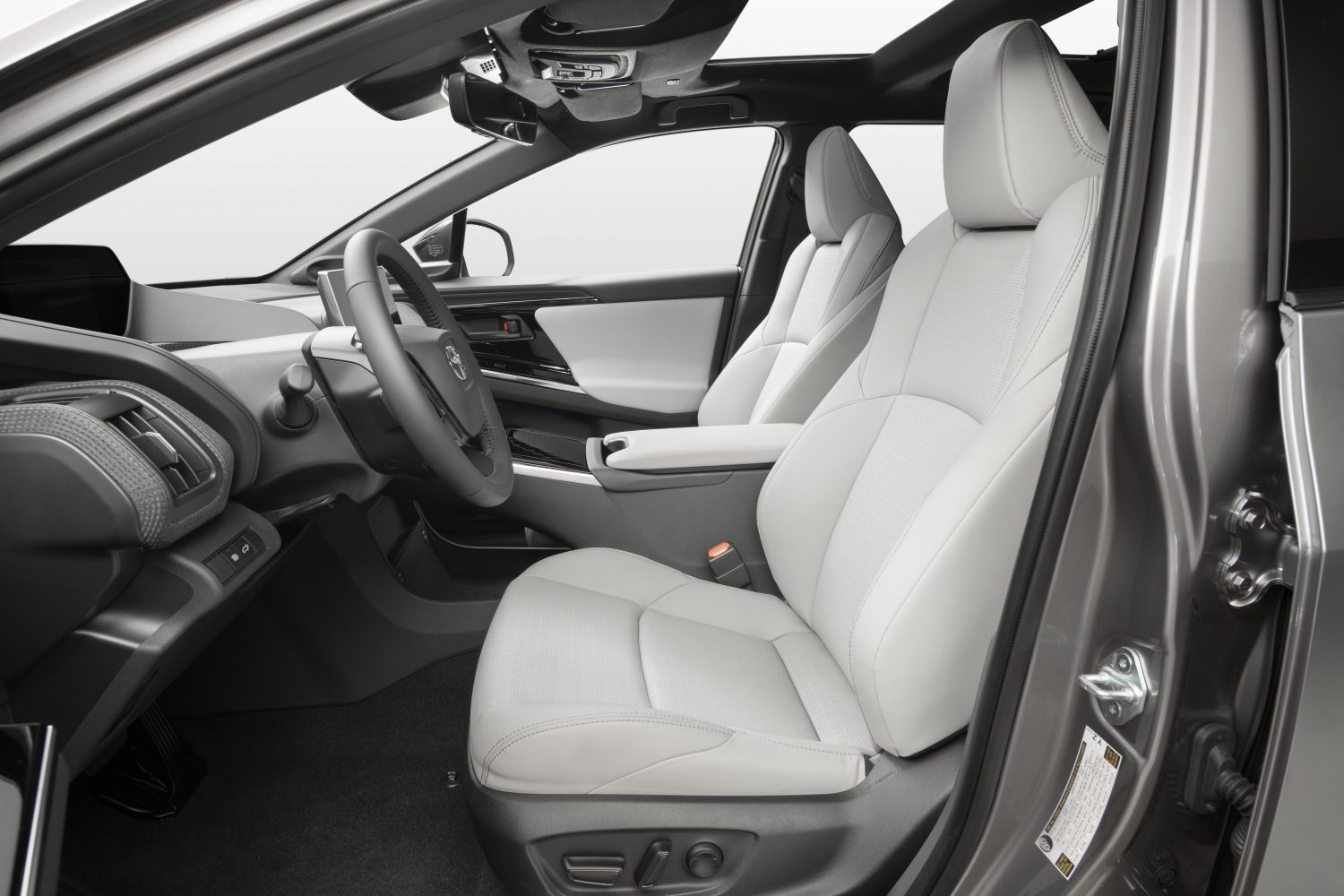The subcompact 2023 Corolla Cross Hybrid racks up 45 mpg in town, 38 on the highway, and 42 mpg combined — with standard all-wheel drive

The new 2023 Toyota Corolla Cross Hybrid has fuel economy estimates of 45 mpg city, 38 highway, and 42 mpg combined. Pricing starts at $30,000, including automatic all-wheel drive. (Photos courtesy of ToyotaUSA)
Table of Contents
Notes from the Test Drive
Interior Function
The Hybrid Powertrain
Pricing
Standard Features By Trim
Warranty Coverage
Safety Technologies
Suspension, Steering, Brakes
Specifications
Toyota’s Corolla Cross is a likable small SUV — and it’s even more likable now that it is available in a gasoline-electric hybrid model. The hybrid model joins the front-wheel-drive, gas-engine Corolla Cross, which went on sale last year.
If there ever was a no-brainer choice for a first-time small ute buyer, the Corolla Cross is it. Its functional body style reminds of a mini-me RAV4, which has grown significantly in size and price. And it is a serious fuel miser with EPA estimated ratings of 45/38/42 mpg city, highway, and combined.
Toyota was in the Carlsbad, Calif., area of San Diego County for the first U.S. journalist drives of the 2023 Corolla Cross Hybrid. Journalists had drive time in the three trim levels of the Corolla Cross Hybrid.
Experiencing the range of trim levels with standard all-wheel drive gave me a good first-drive overview. Based on my first taste of the Corolla Cross Hybrid, I’d like to explore it more on an at-home evaluation for a proper review.

Entry-level models have an 8-inch touchscreen and smart key access.
Notes From the Test Drive
Toyota calls the Corolla Cross Hybrid’s exterior styling “approachable” with a higher line-of-sight. The sturdy stance disguises the upright interior, with open sightlines across the hood and over the shoulder.
Unique front and rear styling and optional two-tone paint choices visually separate the gas and hybrid models.
Standard all-wheel drive seems unusual, but after the wicked weather this winter and spring, the automatic AWD system could be a lifesaver and high on a buyer’s wish list of features.
Of the three trim levels, the base Corolla Cross Hybrid S is ideal for buyers who can live without a moonroof, power liftgate, two-tone paint, adaptive (turning) headlights, or a potent JBL audio system. The only factory choice is for special paint, a $425 cost.
Among the standard features are two USB-C charge ports and a multimedia audio system. It has all the connectivity features, including wireless Apple CarPlay and Android Auto. The multimedia system also allows over-the-air updates.
The driver seat has six-way manual adjustment and four-way for the front passenger.
I was more comfortable in the fabric-trimmed seats of the S rather than the sportier fabric seats in the SE. But the Softex-trimmed (synthetic leather) upholstery in the XSE adds heated front seats and a power driver’s seat.

Cabin materials show Toyota’s newfound attention to using more refined materials and textures.
The Corolla Cross Hybrid Powertrain
Both models of Corolla Cross have a 2.0-liter Dynamic Force four-cylinder engine and an electronic continuously controlled automatic transmission.
Powertrain similarities end there, however.
The gas Corolla Cross has 169 horsepower with front-drive fuel-economy ratings of 31/33/32 mpg city/highway/combined and 29/32/30 AWD.
Performance from the Corolla Cross Hybrid jumps to 169 hp, which Toyota says makes it capable of launching to 60 mph in 8 seconds. If only its 10.6-gallon tank were larger to stretch the time between fill-ups, but placing the hybrid battery under the back seat took up the space. Still, the range is good at around 450 miles.

169-hp from the combined power of the engine and hybrid system.
Interior Function
The interior is not flamboyantly designed but has all the right toughness where it is needed. The materials show Toyota’s newfound attention to using more refined materials and textures.
Smart packaging of the Corolla Cross provides tall front headroom and back-seat space for a young family. Back-seat legroom, however, is grade-schooler-tight at 32 inches. Cargo space has square dimensions for friends-helping-friends move into the new condo.

The e-CVT with Sport mode and hill-start assist.
Toyota Corolla Cross Hybrid Pricing
Expect the 2023 Toyota Corolla Cross Hybrid in dealerships this June. It is offered in S, XSE, and XSE trim levels. Starting prices by trim level:
S $29,065;
SE $29,290;
XSE $32,160.
Manufacturer Suggested Retail Pricing includes the $1,095 freight charge from the new Mazda Toyota Manufacturing plant in Huntsville, Ala.
Check here for current pricing and special offers.

LED headlights are standard on the Corolla Cross Hybrid S and SE models. Adaptive (turning) headlights are a $615 option for the XSE.
Standard Features By Trim Level
The S and SE trim levels have 17-inch alloy wheels, an 8-inch touchscreen, sport-tuned suspension, LED headlamps, and smart key access. The only factory option for the S is optional paint colors, which cost $425.
Moving up to the SE Corolla Cross Hybrid adds privacy glass, roof rails, and paddle shifters. A blind-spot monitor and rear cross-traffic alert add to the standard roster of safety features (highlighted below).
The top-line XSE is the sportiest offering, with such extras as:
- 18-inch alloy wheels;
- LED headlamps, taillamps, and fog lamps;
- Softex-trimmed (synthetic leather) upholstery with heated front seats and a power driver’s seat.

The XSE has 18-inch alloy wheels with a black-painted machined finish and 225/55 all-season tires.
Warranty Coverage
Toyota’s basic new-vehicle warranty coverage covers 3 years or 36,000 miles bumper to bumper and 5 years or 60,000 miles for the powertrain.
Hybrid-related components that require repairs to correct defects in materials or workmanship are covered for 8 years or 100,000 miles, whichever comes first from the original date of first use when sold as new.
The hybrid battery is covered for 10 years or 150,000 miles, whichever comes first, and is transferable across ownership.
The warranty package includes ToyotaCare, covering factory-scheduled maintenance for two years or 25,000 miles with 2 years of roadside assistance.
Paint Color Choices
The SE and XSE levels of the Corolla Cross Hybrid have special two-tone combinations, $500 each:
- Sonic Silver with a black roof;
- Barcelona Red with a black roof;
- Blue Crush Metallic and black roof, and;
- Acidic Blast (gold) and black roof. Acidic Blast is a new color.
Standard monochromatic paint colors include:
- Jet Black Mica;
- Cypress (forest green);
- Celestite (sky blue);
- Wind Chill Pearl (off-white; $425 extra)

Back-seat legroom is grade-schooler tight at 32 inches.
Corolla Cross Safety Technologies
Including nine air bags, the Corolla Cross Hybrid has substantial standard safety features, anchored by Toyota Safety Sense 3.0. Among the advanced technologies are:
PCS w/PD — Pre-Collision System with Pedestrian Detection;
DRCC — Dynamic Radar Cruise Control;
LDA w/SA — Lane Departure Alert with Steering Assist;
LTA — Lane Tracing Assist;
LCA — Lane Change Assist;
FCT — Front Cross Traffic Alert;
RSA — Road Sign Assist.
Star Safety System includes:
VSC — Enhanced Vehicle Stability Control;
TRAC — Traction Control;
ABS — Anti-lock Brake System;
EBD — Electronic Brake-force Distribution;
BA — Brake Assist;
SST — Smart Stop Technology;
AHB — Automatic High Beams;
PDA — Proactive Driving Assist.

The Corolla Cross Hybrid model has unique front and rear styling, and optional two-tone paint choices, $500 each. AcidicBlast paint color is shown.
Suspension, Steering, Brakes
Suspension: Four-wheel independent with front sport-tuned MacPherson struts with stabilizer bar, coil springs, and hydraulic shock absorbers; Rear, sport-tuned double-wishbone multi-link rear with coil springs, trailing arms, stabilizer bar and hydraulic shock absorbers;
Steering: Electric power-assisted rack-and-pinion;
Brakes: Front ventilated 12-inch diameter rotors; rear solid 11.1-inch rotors.
Wheels and Tires
S and SE: 17-inch silver-colored alloy wheels with 215/65 all-season tire;
XSE: 18-inch alloy wheels with black-painted machined finish with 225/55R all-season tires;
There is a tire-inflation system, no spare tire.
Curb weights
S — 3,395 pounds;
SE — 3,385 pounds;
XSE — 3,430 pounds.

Cargo space of 40.3 cu.ft. behind the back seat. All-weather floor liners (three) are a $179 accessory.

Fold the back seat and load it up for friends-helping-friends move into the new condo.
2023 Toyota Corolla Cross Hybrid Specifications
Body style: All-wheel-drive 5-seat, 5-door small SUV
Engine: 150-hp 2.0-liter with direct- and multiport injection; 139 lb.-ft. torque at 4,400 rpm
Transmission: E-CVT with electronic on-demand AWD
Fuel economy: 45/38/42 mpg; 87 octane or higher recommended
Max towing capacity: 1,500 pounds
0-60 mph acceleration: 8 seconds, per Toyota
COROLLA CROSS HYBRID SYSTEM
Electric motor: permanent magnet synchronous; 152 lb.-ft. torque
Battery: 222-volt lithium-ion; 4.08 Ahr
System voltage: DC600V
Combined system power: 196 hp
BY THE NUMBERS
Fuel tank: 10.6 gallons
Cargo space: 40.3 to 61.8 cubic feet
Front head/leg room: 39.5 inches*/42.9 inches
Rear head/leg room: 39.1/32 inches
Length/wheelbase: 176.8/103.9 inches
Turning circle: 35.4 feet
PRICING
Base prices, including the $1,095 freight charge:
S $29,065;
SE $29,290;
XSE $32,160
Where assembled: Huntsville, Ala.
Warranties: 3-years/36,000-miles bumper to bumper; 5-years/60,000-miles powertrain; hybrid components are covered for 8 years or 100,000 miles, and the hybrid battery is covered for 10 years or 150,000 miles.
Included in the warranty package is ToyotaCare, covering factory-scheduled maintenance for two years or 25,000 miles, with 2 years of roadside assistance.































